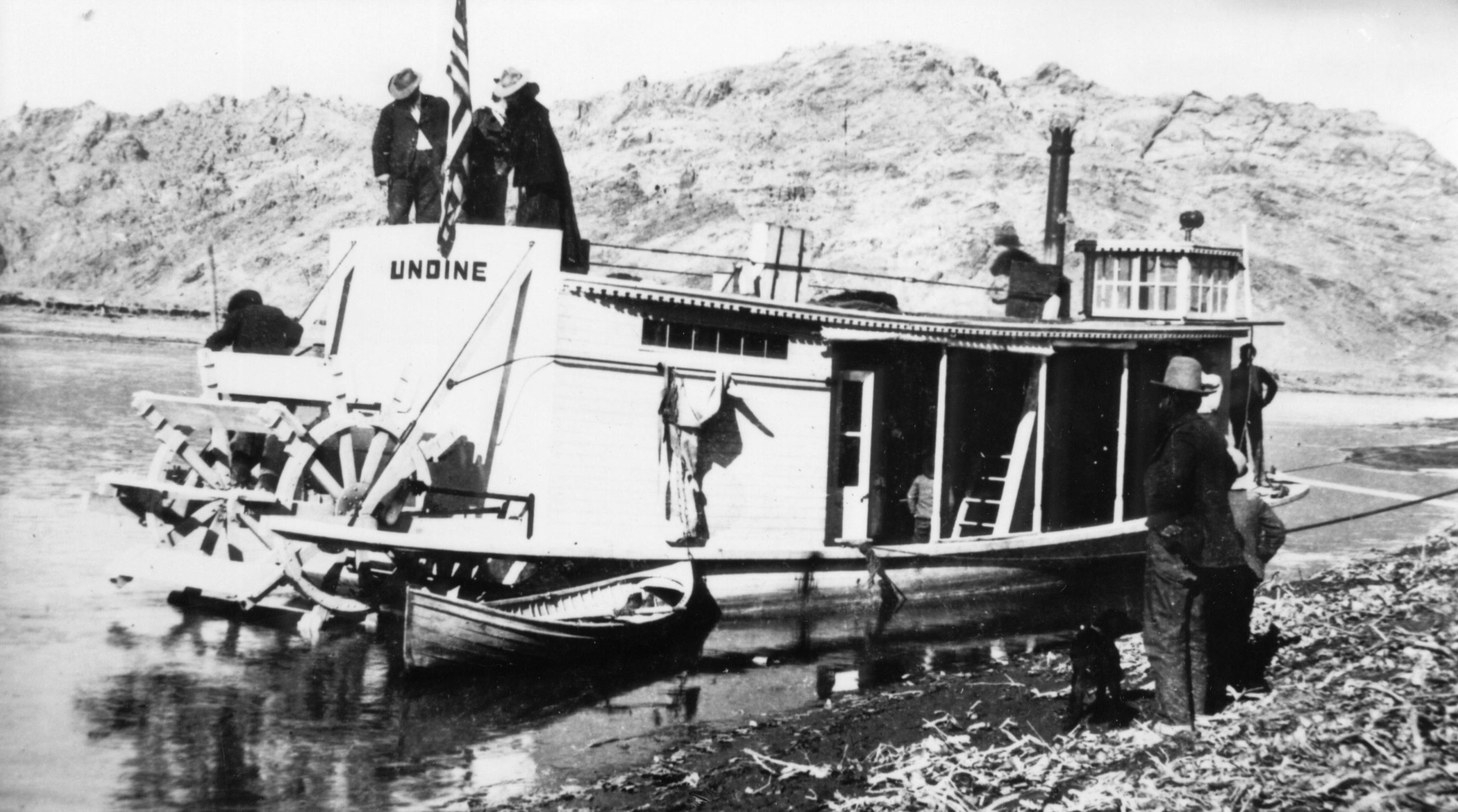Some information may be outdated.
As temperatures climb back up toward t-shirt weather, Moabites and visitors alike begin to turn to the cool waters of the river. Long beloved for its rapids and stunning scenery, the Colorado River has attracted recreational boaters for decades. Today, sturdy rubber rafts, agile dories, and shallow-draft jet boats navigate the riverway deftly.
In the early 1900s, however, Moab-area settlers and enterprising businessmen from across the region attempted to use steamboats on the Colorado: a largely unsuccessful endeavor that nonetheless resulted in some incredible stories.
One notable steamboat in Moab’s history was the Undine. The brainchild of F.H. Summerhil of Denver, the Undine was built in Illinois and shipped to Green River in pieces for assembly. The steamboat was sixty feet long and ten feet wide, and had a coal-burning engine that powered paddle wheels at the boat’s stern.
Summerhil launched the boat in Green River on November 22, 1901, setting off downstream with his son, a photographer, and a crew of four.
The Undine struck a submerged rock almost immediately after launching. The hull was patched and the ship continued downstream, but even with a draft of only twelve inches, the large boat ran aground repeatedly on submerged sandbars and boulders. The trip to the confluence of the Green and Colorado rivers was slow and arduous. They finally made it to Spanish Bottom, just above the first rapids of Cataract Canyon, and stopped to camp for a week while Summerhil scouted the area hoping to find a suitable spot to build a resort.
After a week, they turned the boat upstream, this time bearing right at the confluence and continuing up the Colorado River (then called the Grand River) toward Moab. The crew was grateful to find the trip upstream easier than their trip down the shallower Green River, and they arrived in Moab triumphant after three days of motoring upstream.
Summerhil had grand ideas: he hoped to start a tour business, purchase a second boat, build a resort, and engineer the river channels through dredging to make navigation easier. Alas, his high hopes were dashed in May of 1902.
Summerhil took the Undine upstream from Moab, curious how far he could get. The springtime had brought high water and disaster struck at Big Bend, about eight miles upstream of Moab. As Summerhil was attempting to get the Undine through a riffle, the boat suddenly swung broadside to the current and capsized, rolling over and drifting downstream.
Summerhil made it clear of the ship and walked back to town with minor injuries. Two crewmen clung to the boat, which eventually caught on a rock midstream. A local rancher saw the two men and brought help from town, eventually rescuing the men with rowboats. The engine and boiler were salvaged from the boat, but Summerhil’s business aspirations were dashed.
Today, boats traveling this stretch of river bear little resemblance to Summerhil’s Undine. Over time, boating has changed dramatically on the Colorado River, with numerous innovations since the Undine’s brief adventures on the rocky, wild river.
The Moab Museum is dedicated to sharing stories of the natural and human history of the Moab area. To explore more of Moab’s stories and artifacts, find out about upcoming programs, and become a Member, visit www.moabmuseum.org.
Appreciate the coverage? Help keep local news alive.
Chip in to support the Moab Sun News.





